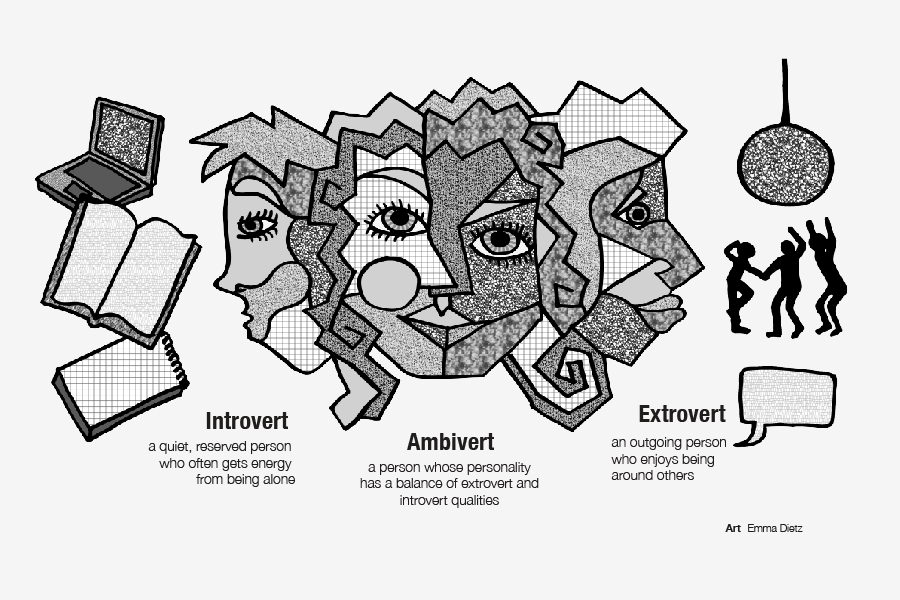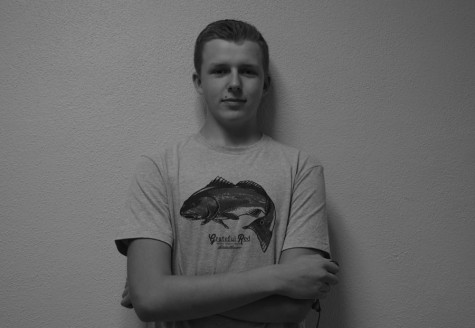Social traits craft identity
Personality takes many forms, exists as spectrum
April 13, 2016
Sophomore Katie Steiner said her behavior in social situations leads her to believe she is introverted.
“I think I am an introvert because I am very quiet, and I really only show my personality around my close friends,” Steiner said.
School social worker Daniel Perez said on the most basic level, social habits are divided into three different categories.
“The first general social tendency is extroversion. Extroverted people tend to be more personable,” Perez said. “Introverts, the next general group, tend to be much more quiet and reserved. Finally, there are ambiverts, who fall in between the two groups.”
Colin DeYoung, an associate psychology professor at the University of Minnesota, said everyone falls somewhere along a spectrum from extroversion to introversion.
“The spectrum is distributed like a bell curve. Most people are going to be fairly close to the average, so most people would be considered as an ambivert and then on the edges of the curve will be in extreme extroverts and extreme introverts,” DeYoung said.
Despite this pattern, senior Kennedy Septon said he suspects people’s personalities can develop over the course of a lifetime.
“I feel like people change how they act over time as their minds develop and different experiences shape them,” Septon said.
Perez said people are not defined by their position on the personality spectrum.
“Being an introvert, extrovert or ambivert is not a personality type but rather characteristics of your personality,” Perez said.
Sophomore Eli Curran-Moore said having an ambivert personality helps in social situations.
“Being more ambiverted is like having the best of both worlds, because at the same time you can get the social benefits of both of the other types without their downfalls,” Curran-Moore said.
Perez said people who are more extroverted achieve more professional accolades.
“In our society, we definitely have a bias toward extroverts. We know from the research extroverted people are much more likely to be promoted than introverted people,” Perez said.
DeYoung said new studies have uncovered information revealing social characteristics are deeply intertwined with basic human nature.
“Extroversion has to do with how people respond to rewards, so really you can trace back to a primordial psychological function,” DeYoung said. “People who are highly extroverted are a lot more keen to possibilities of getting a reward then people who are low in extroversion.”
DeYoung said part of the deviation between each personality can be traced back to genes.
“Genetics do play a role, but it’s not purely genetics. The estimates say about 50 percent of variation in personality characteristics between people can be traced back to genes, but then the other 50 percent has to come from experiences,” DeYoung said.
Perez said he believes personality tendencies are flexible, and social traits continue to grow until a person reaches 30 to 35 years of age.
“I have seen people just blossom into a different person from being very shy and coy to outgoing, assertive and confident — not to say coy and shy isn’t confident,” Perez said.




